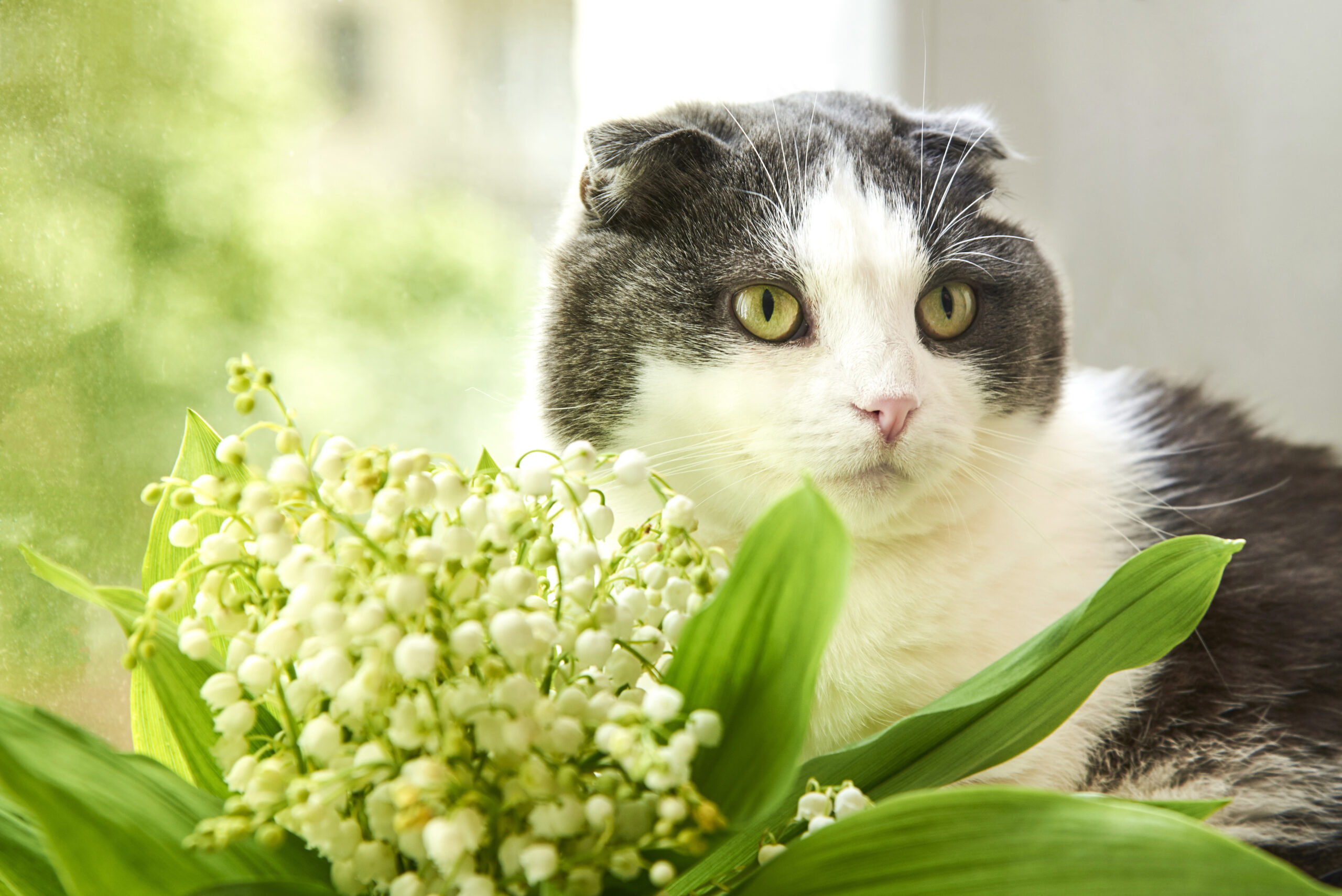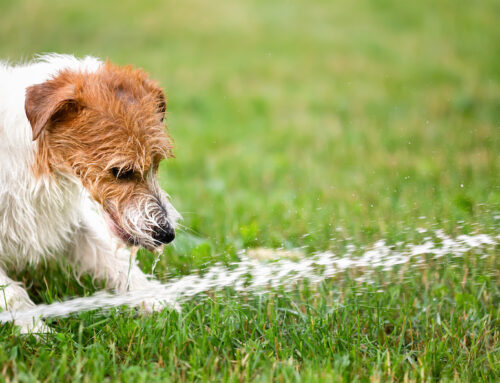It’s gardening season in Smyrna, but before you place that pretty plant in the garden you’ll want to be sure it is not poisonous to your pet cat or dog. In honor of National Pet Poison Prevention Awareness Month, we’ve gathered the must-know info on some of the many plants that are poisonous, even deadly, to your family pets.
Be Prepared for a PET POISONING EMERGENCY

First things first! If you suspect your cat or dog has ingested a poison of any kind call a local Smyrna emergency veterinarian right away. You should keep that phone number along with the following poison emergency contacts, posted on your fridge and in your animal emergency first aid kit:
- 24-hour ASPCA Animal Poison Control Center (888-426-4435)
- Pet Poison Hotline (855-764-7661)
- GA Poison Control Center
- Your Primary Care Veterinarian*
*If your primary care vet is affiliated with an emergency veterinary hospital, then you would call them right away.
Additionally, if the Animal Care Center of Smyrna is not your primary veterinarian, be sure to follow-up with a call to your vet’s office for follow-up care. If you can’t reach your regular vet, please do contact us.
Plants that are Poisonous to Curious Cats and Dogs
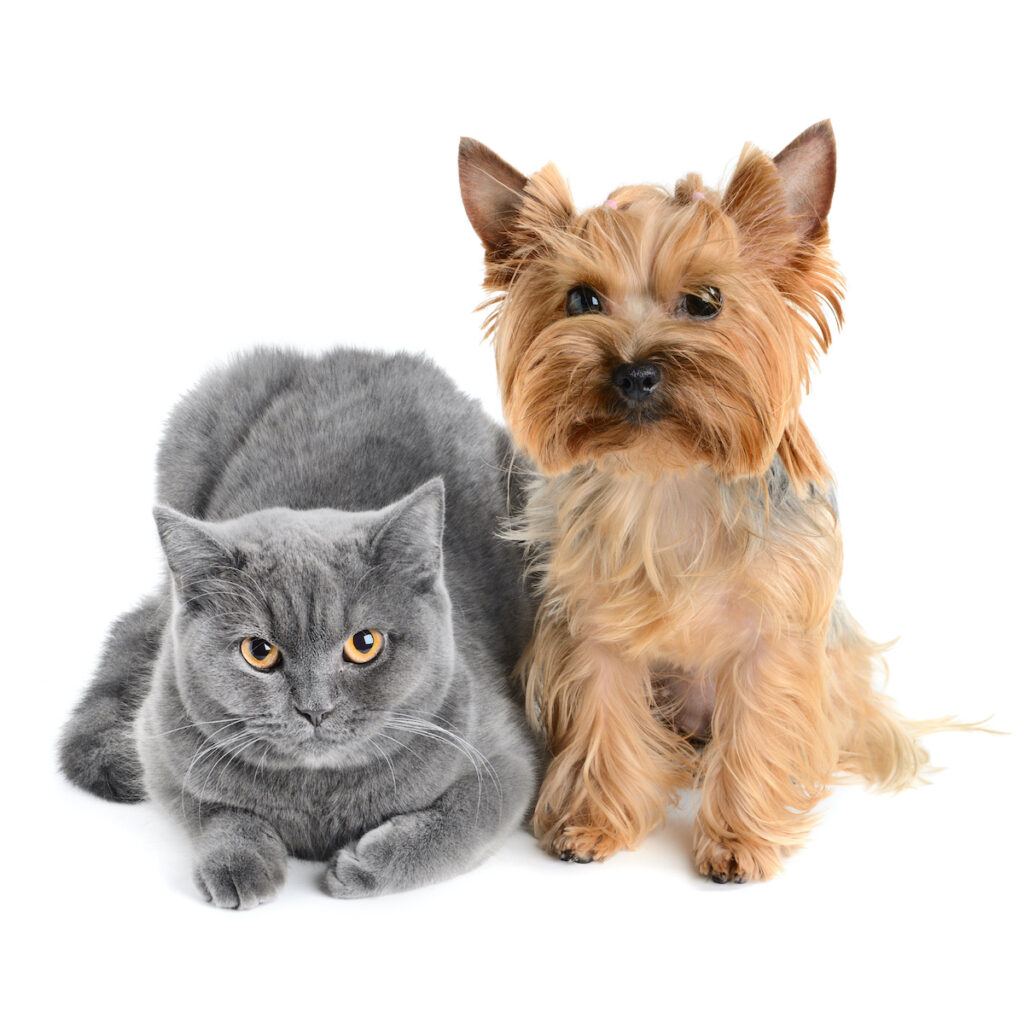
Curious cats and dogs inevitably get themselves into dangerous situations inside and outside the home. Plants are one of the most overlooked sources of pet poisoning tragedies. Use the following list to identify poisonous plants before opting to plant them within reach of Fido and Fluffy’s play areas. And we understand, some plants are just so beautiful, you can’t resist planting them in the garden or adorning your living room. Knowing ahead of time which plants pose a risk to your pet will help you place those potted beauties well out of reach of your family dog or cat.
Azalea
Azalea blooms are one of the most beloved spring plants. Azaleas are poisonous if any part of the plant is ingested by your pet. Eating even a few leaves can cause vomiting, diarrhea, and excessive drooling. If you don’t get your pet immediate veterinary care, the animal could succumb to a coma and possibly die.

This kitty could become ill if she eats azalea plant.
Crocus
The crocus plant has two varieties: Autumn and Spring. Both are damaging to a pet’s health with Autumn Crocus causing fatal outcomes if your dog or cat ingests it. The Spring Crocus can cause general gastrointestinal upset including vomiting and diarrhea. The Autumn Crocus belongs to the Liliaceae family; it contains a plant chemical called colchicine. The Autumn Crocus is highly toxic if ingested, causing severe vomiting, gastrointestinal bleeding, liver and kidney damage, and respiratory failure.
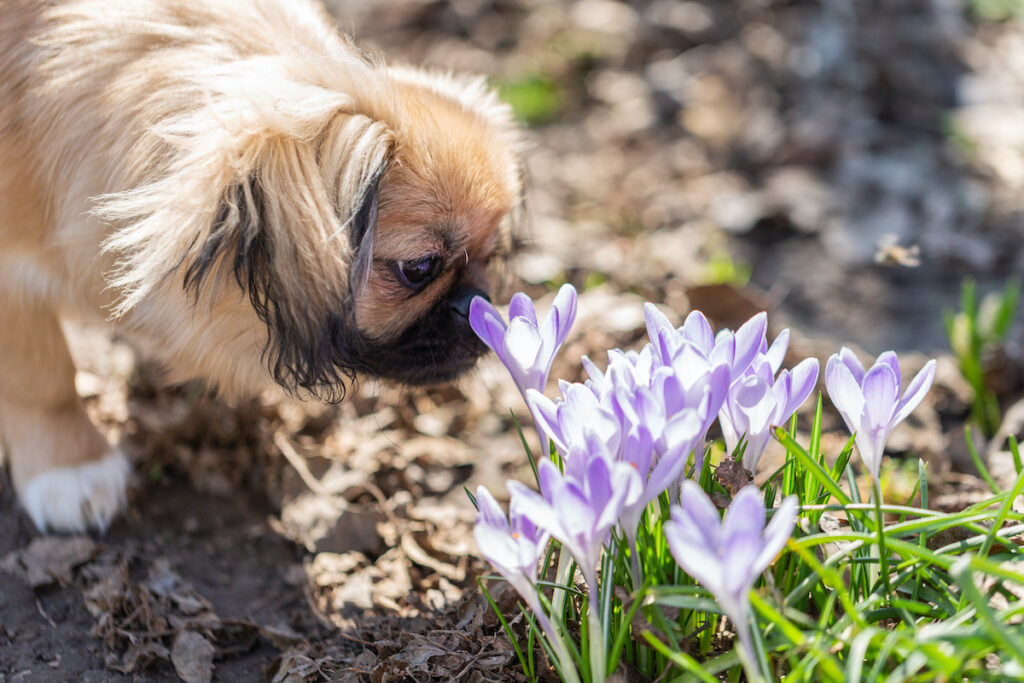
Autumn Crocus can quickly kill a dog or cat.
Cyclamen
If your dog (or cat) is a digger, then keep cyclamen out of your garden and even your house. Cyclamen is deadly to pets. You’ll often see this plant for sale in grocery stores and hardware stores. It is also known as the Persian Violent. Don’t be fooled by this deadly beauty: Cyclamen contains saponins, an irritating substance that is concentrated in the tubers and roots but also present in the flowers and stems, When any part of the plant (especially the tubers or roots) are chewed or ingested by dogs and cats, it can result in drooling, vomiting, diarrhea and lead to cardiac failure.
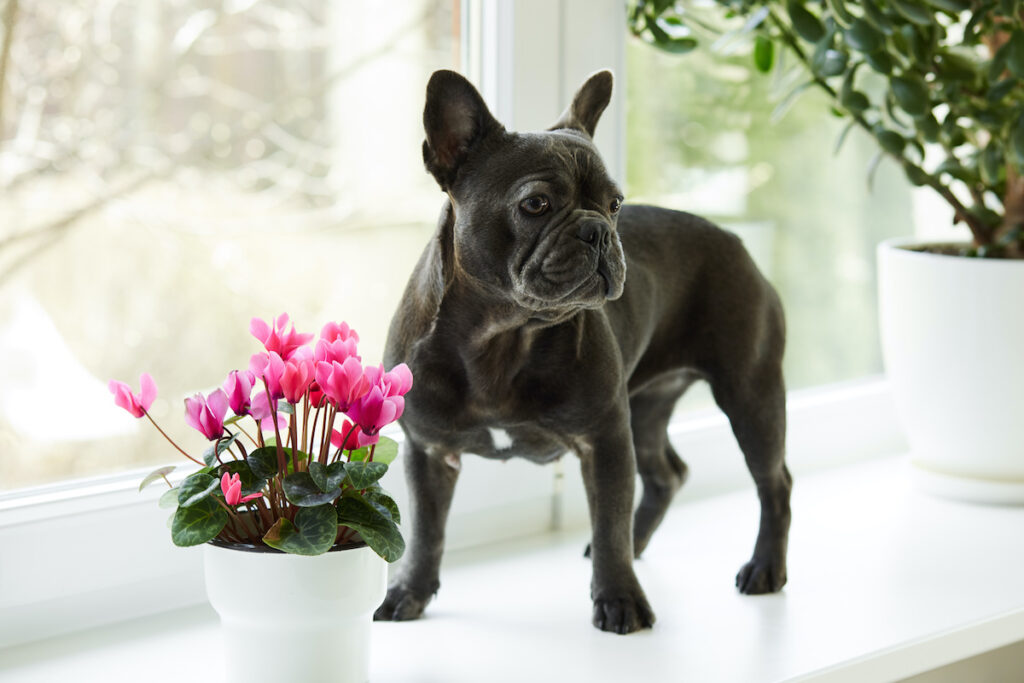
All parts of the crocus plant are deadly to cats and dogs.
Daffodils
Bright and cheerful daffodils are deadly for pets. This plant contains an alkaloid known as lycorine, which causes vomiting. If your pest ingests the bulb, plant or flower they can experience severe vomiting, diarrhea, abdominal pain, and be at risk for cardiac arrhythmias or respiratory distress. Why? The crystals found in the outer layer of the bulbs can irritate respiratory airways.
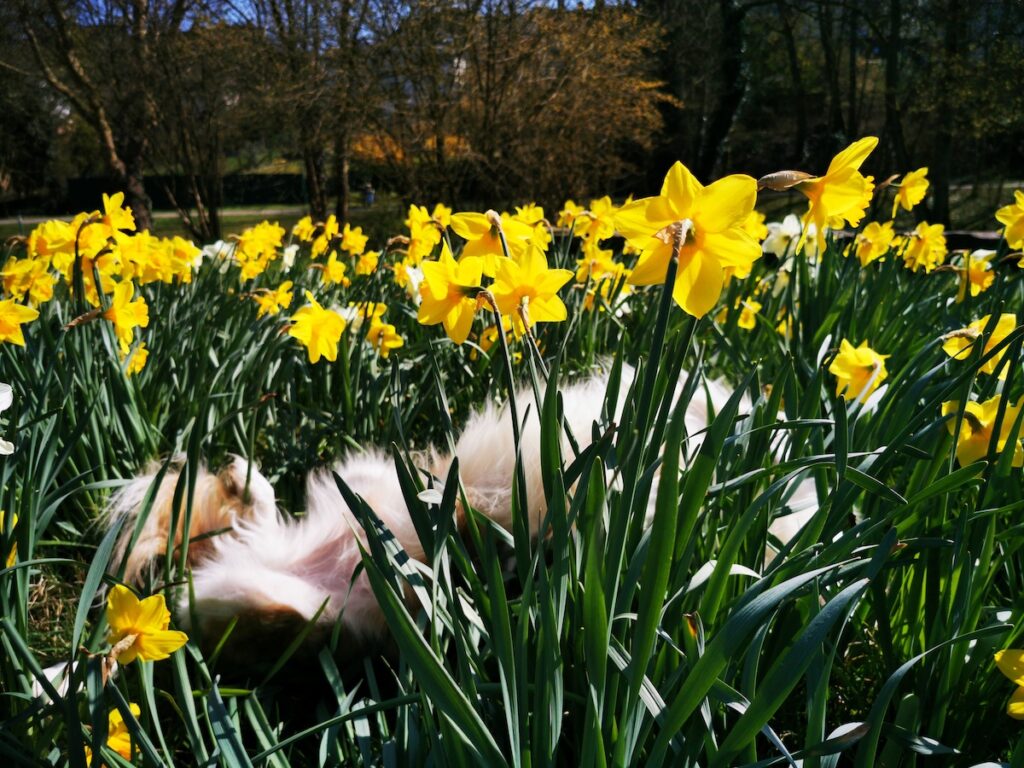
Daffodil ingestion by a dog or cat can lead to fatal cardiac emergency.
Dieffenbachia
The dieffenbachia is recognizable by its large, stunning variegated leaves. These striking plants are popular in homes and offices. However, dieffenbachia contain calcium oxalate crystals that are released during chewing and which irritate and penetrate the delicate tissues of the mouth and GI Tract.

Foxglove
The foxglove plant has colorful drooping trumpet shaped blossoms that sit atop tall stalks. They are a favorite in the garden and are deadly to your pets. Also known as digitalis (just like the heart medication, which is made from this plant), foxglove contains compounds that alter the heart rate by directly interfering with electrolyte balance within the heart muscle.
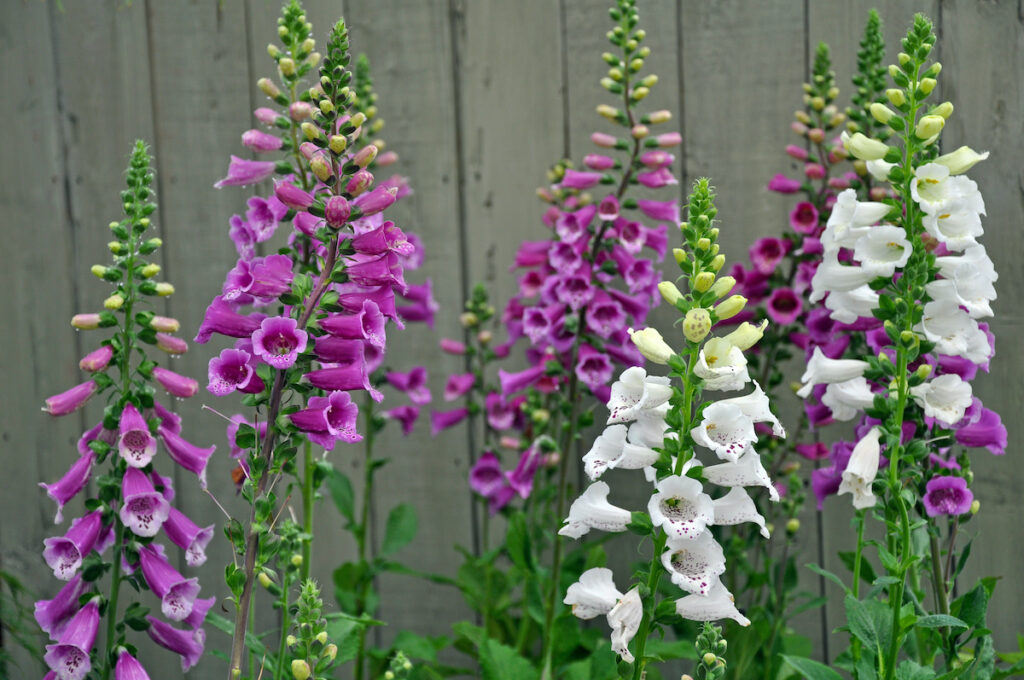
Foxglove is deadly if ingested by a family pet.
Hyacinth and Tulips
Tulips and hyacinths contain similar allergenic compounds. The bulbs of these plants contain concentrated toxic components whereas the the leaf or flower do not have high concentrations. If your dog is a digger, keep him or her away from the bulbous plants in the garden! If a dog or cat ingests the plant parts or bulbs, it can result in tissue irritation to the mouth and esophagus as well as cause diarrhea, depending on the amount consumed. There’s no specific antidote, but with supportive care from a veterinarian, animals do recover quite well. However, if your pet ingests large quantities of these bulbs, more severe symptoms such as rapid heart rate and changes in breathing will be evident and need emergency treatment.
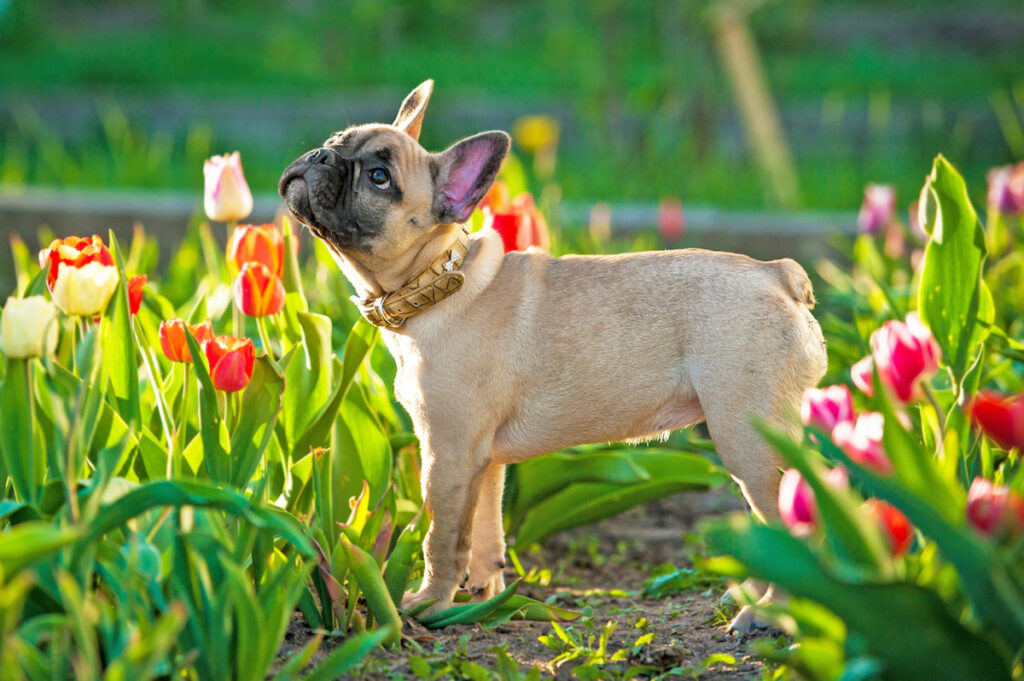
Keep tulip and hyacinth bulbs, especially, away from your pet.
Lily of the Valley
The delicate Lily of the Valley plant contains dangerous cardiac glycosides that cause symptoms similar to foxglove ingestion. These symptoms include vomiting, diarrhea, slowed heart rate, abnormal cardiac rhythm, and seizure.
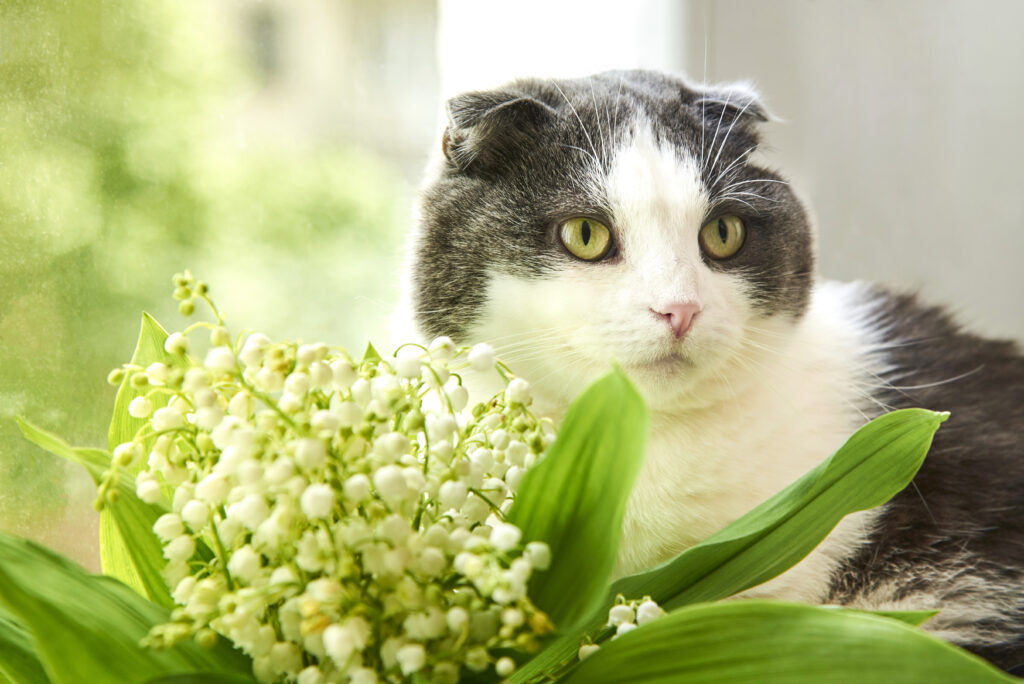
Pretty kitty won’t thrive if she ingests Lily of the Valley.
Lily Varieties
Lilies are show-stoppers and quite dangerous to cats. So dangerous, there is a national “No Lilies for Kitties” campaign. There are so many varieties of color, size, and splendor that most gardens and homes have lily plants in the spring and summer months. Most lilies are poisonous to pets including:
Peace, Peruvian, and Calla lilies contain oxalate crystals that cause irritation to the mouth, tongue, pharynx, and esophagus and this results in minor drooling.
Tiger, Day, Asiatic, Easter and Japanese Show lilies are a real danger to pets and are highly toxic to cats.
Mountain Laurel
The aromatic Mountain Laurel is also known as SheepKill, and it’s deadly to grazing animals and family pets, alike. It has an amazing, fragrant aroma that you often will notice while hiking or picnicking. However, a dog or cat that ingests mountain laurel will experience drooling, committing, diarrhea, cardiac arrhythmia, tremors and may fall into a coma and die.

Mountain Laurel can kill farm animals, cats and dogs.
Oleander
The stunning oleander shrub that can kill your pet. Oleander is popular for its evergreen features and delicate flowers. Both the leaves and flowers are toxic if ingested, causing severe vomiting, slow heart rate, and possibly death.
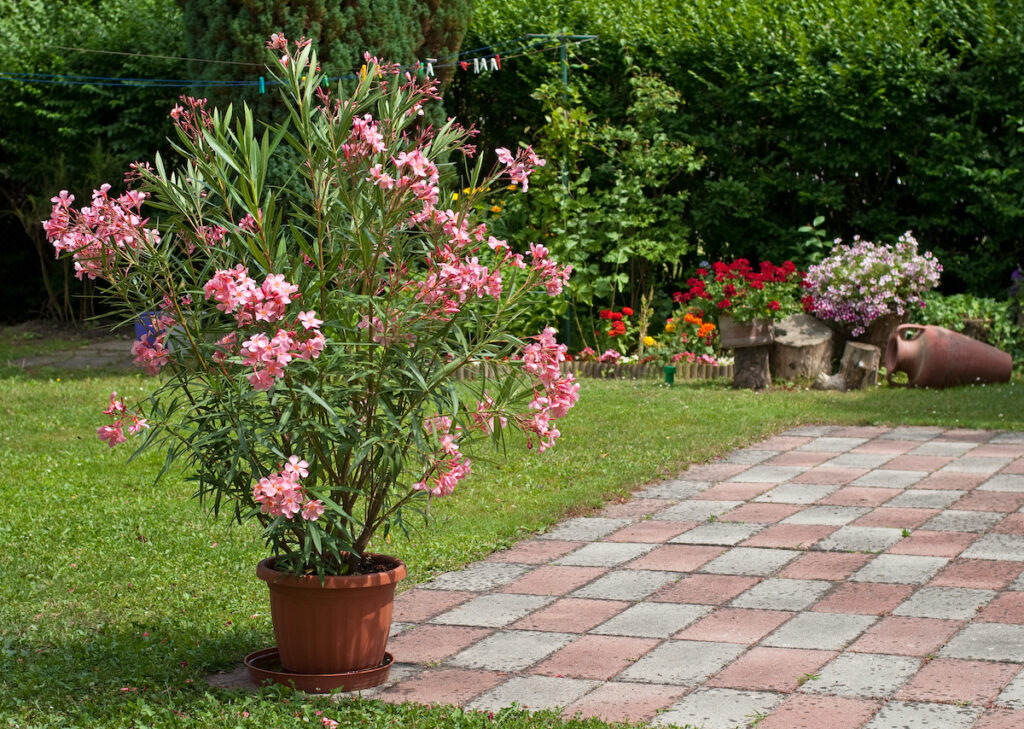
Dogs or cats can die from ingestion of the oleander plant.
Sago Palm
The Japanese Sago palm is a favorite for the home and garden. If a dog or cat ingests the leaves and seeds from the Sago Palm, it can cause vomiting, bloody stools, damage to the stomach lining, liver failure and, may cause death.

Next Steps to Protect Your Pet from Poisoning by Plants
There are many safe varieties for some of the plant species listed, but not for all. Additionally, there are dozens of other plants not listed here that also are poison hazards for your pet.
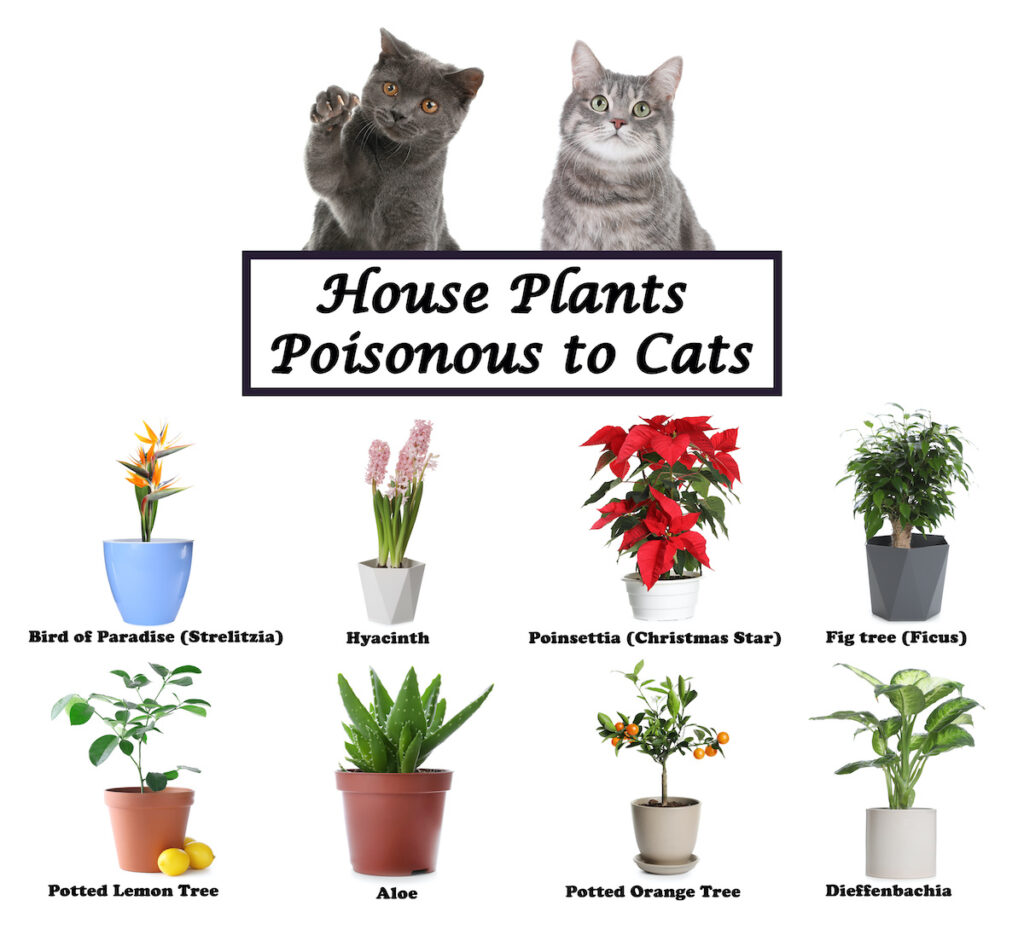
For Your Pet’s Sake: Before You Buy Plants, Talk to the Experts
Do your research: Consult with a knowledgeable garden specialist about what you (or any landscaping service company) will be planting in the yard and garden or around your house. Check out the resources we’ve listed at the end of this post for more information.
REMEMBER: Pesticide, herbicide, fertilizer, and even compost are poisonous to animals. Store these products away from pets and keep your pets off the grass for 24 hours after application of these products.
BE AWARE: Organic plant matter does not equate to being safe for pets. Marijuana amd many varieties of mushroom also are poisonous to pets.
Symptoms of Pet Poisoning
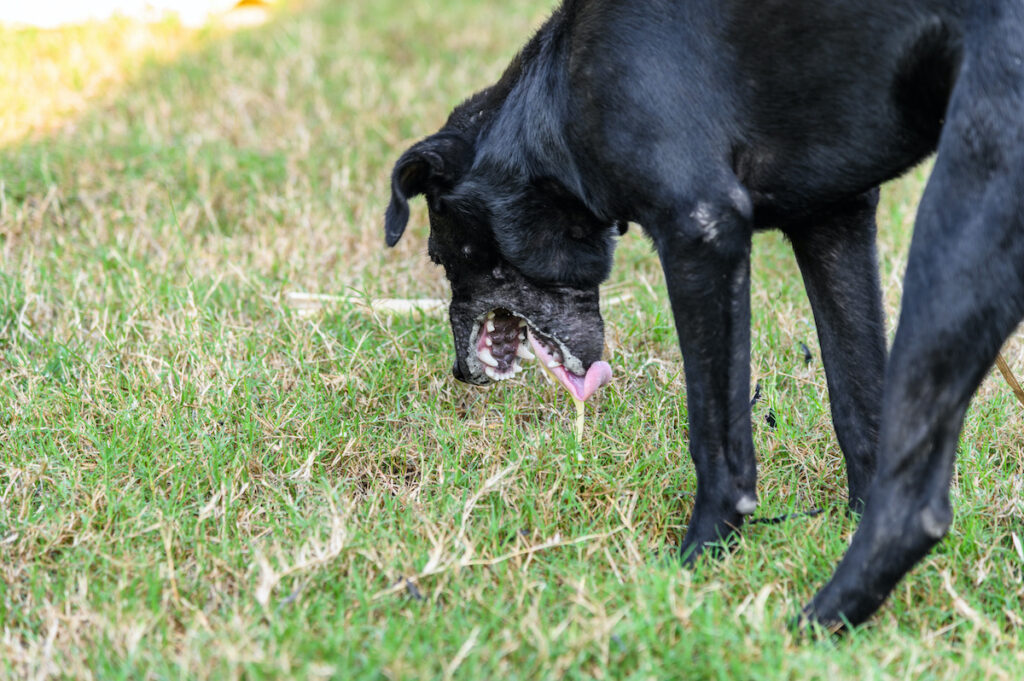 Depending on the type of poisonous plant that your pet has ingested, the types of symptoms as well as severity of symptoms can vary in cats or dogs. Keep in mind that the type of dog or cat you have, its size, and health history could make the symptoms of poisoning more or less severe.
Depending on the type of poisonous plant that your pet has ingested, the types of symptoms as well as severity of symptoms can vary in cats or dogs. Keep in mind that the type of dog or cat you have, its size, and health history could make the symptoms of poisoning more or less severe.
If you see any of these symptoms in your dog or cat, seek immediate veterinary care:
- Diarrhea
- Drooling
- Vomiting
- Lethargy
- Difficulty breathing (heavy breathing or slower rate of breathing)
- Change in pulse (faster or slower)
- Changes in appetite including drinking water
- Impaired mobility (falling over, weakness)
- Change in behavior around other animals and people
- Change in color and odor of stool
- Seizure
Prepare Your Pet’s Poison Emergency Kit
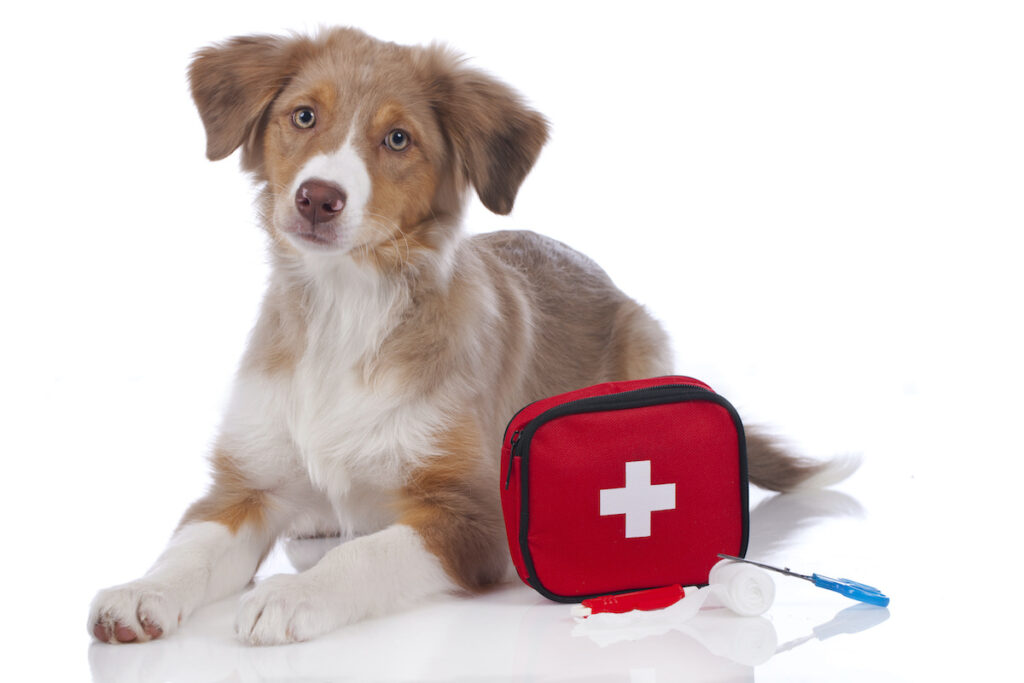 Before we leave you, we want to invite you to check out this resource to help you put together a pet poison emergency kit.
Before we leave you, we want to invite you to check out this resource to help you put together a pet poison emergency kit.
If you have any questions on what should be in your pet emergency kit, contact the Animal Care Center of Smyrna or call us at 770-438-2694.
Trust Your Pet’s Health to Animal Care Center of Smyrna
Cats, dogs, and their owners trust Animal Care Center to deliver comprehensive, compassionate, and affordable veterinary care in the greater Smyrna area and nearby communities. Dr. Otto Williams is our in house “animal whisperer” with his amazing ability to calm down even the most jittery pet. Dr. Williams and his team give the time necessary to educate pet owners and ensure they feel confident in the caregiving their pets need.
Resources
How to Poison Proof Your Yard and Garden for Your Pet
No Lilies for Kitties Campaign
Symptoms of Canine Poisoning Canine Journal

